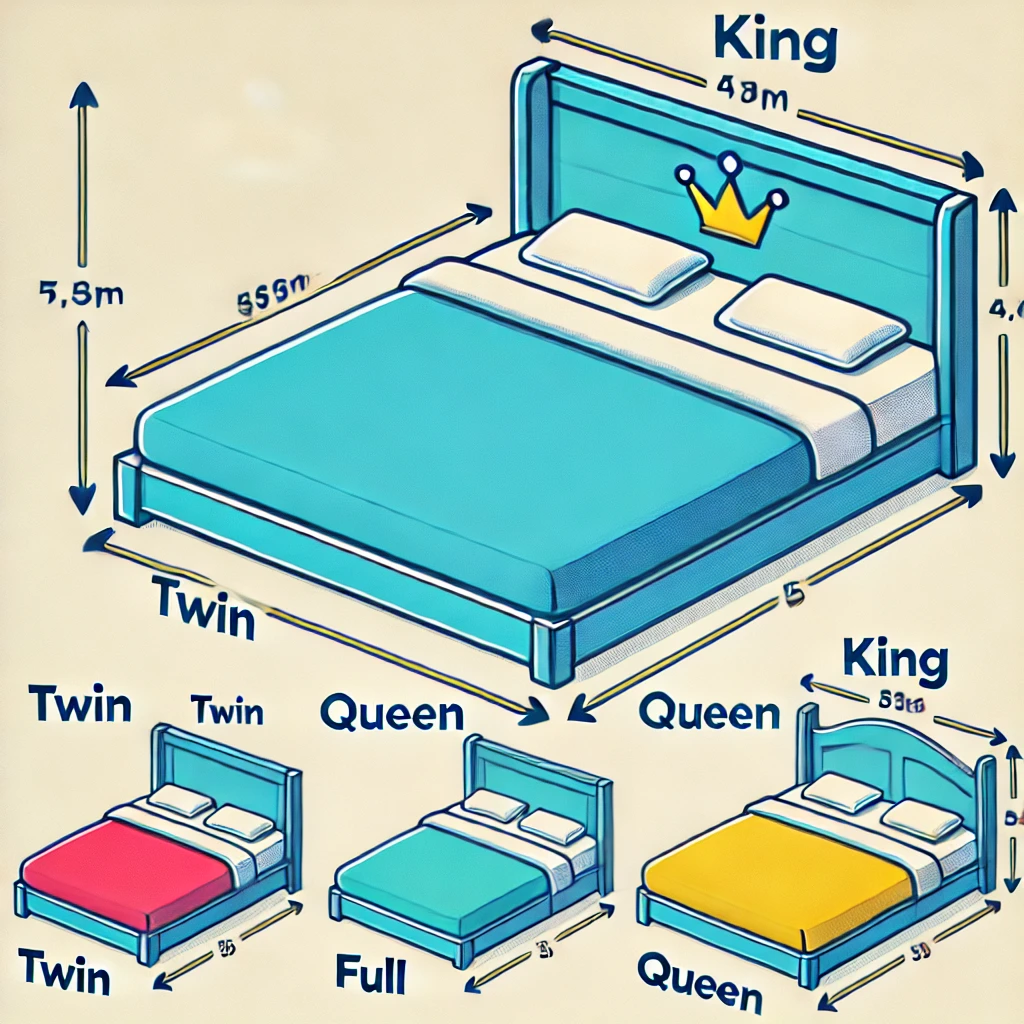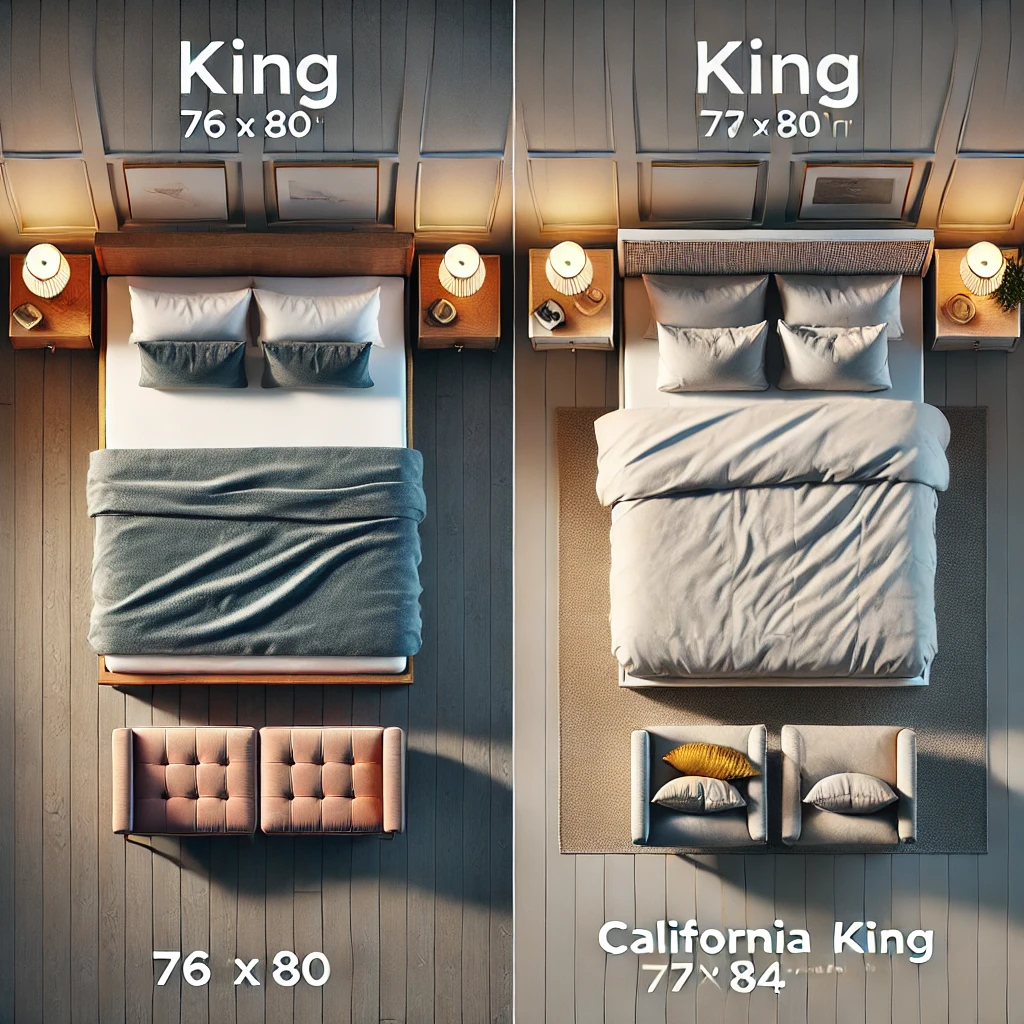King Size Bed Dimensions
If you’re waking up cramped, sharing space with kids or pets, or simply craving more room to stretch, it’s time to explore king size bed dimensions. This guide covers everything from standard to California and split kings, helping you choose the perfect fit for your sleep sanctuary.:contentReference[oaicite:4]{index=4}
Key Takeaways
- Standard King: 76″ x 80″, offering ample width for couples and families.
- California King: 72″ x 84″, ideal for taller individuals needing extra legroom.
- Split King: Two Twin XLs (38″ x 80″ each), perfect for adjustable beds and personalized comfort.
- Ensure your room is at least 12′ x 12′ to accommodate a king-size bed comfortably.
- Choose bedding and frames that match your specific king size to avoid fit issues.
🛌 Understanding King Size Bed Dimensions
Upgrading to a king-size bed isn’t just about luxury—it’s about reclaiming your space and improving sleep quality. Let’s delve into the different king-size options available:
Standard King (Eastern King)
Measuring 76 inches wide by 80 inches long, the standard king is the widest standard mattress available. It’s perfect for couples who value personal space or share the bed with children or pets. Each person gets about 38 inches of width—equivalent to a twin bed. Sleep Foundation
California King (Western King)
The California king measures 72 inches wide by 84 inches long, offering extra legroom for taller individuals. While it’s narrower than the standard king, its added length makes it a favorite among those over 6 feet tall. Purple
Split King
A split king consists of two Twin XL mattresses (38″ x 80″ each) placed side by side. This setup allows couples to customize firmness levels on each side and is compatible with adjustable bed bases. Casper

🏠 Room Size Recommendations
To ensure your king-size bed fits comfortably:
- Standard King: Minimum room size of 12′ x 12′.
- California King: Ideal room size of 12′ x 12′ or larger.
- Split King: Same as standard king, but consider additional space for adjustable bases.
For more on optimizing your bedroom layout, explore our Complete Guide to Bed Sizes.
🛌 Choosing the Right King Size for You
- Standard King: Best for couples wanting maximum width.
- California King: Ideal for taller individuals needing extra length.
- Split King: Perfect for couples with different firmness preferences or using adjustable bases.
Remember, bedding and frames are not interchangeable between these sizes. Ensure you select accessories that match your chosen bed size.
🛌 The Split King Advantage
A split king offers flexibility and personalized comfort:
- Each side can have a different firmness level.
- Compatible with adjustable bases for individualized positioning.
- Easier to move and set up compared to a single king mattress.
For couples with varying sleep preferences, a split king can be a game-changer.
✨ Styling Your King Size Bed
Elevate your bedroom aesthetics with these tips:
- Bed Frame: Choose a sturdy frame that complements your decor—be it a modern platform or a classic sleigh bed.
- Bedding: Opt for deep-pocket sheets, especially for pillow-top mattresses. Materials like organic cotton or bamboo enhance breathability.
- Pillows: Use two king pillows for sleeping, and add standard or decorative pillows for style.
- Accessories: Layer with a plush duvet and a cozy throw to complete the look.

🍭 Ready to Upgrade?
A king-size bed can transform your sleep experience. Assess your room dimensions, sleep habits, and aesthetic preferences to make the best choice. For more insights, visit our King Size Mattress Dimension Breakdown.
Investing in the right king size bed dimensions ensures comfort, style, and restful nights.
FAQ
- What are the exact dimensions of a standard king bed?
- A standard king bed measures 76 inches wide by 80 inches long.
- How does a California king differ from a standard king?
- A California king is 72 inches wide and 84 inches long, making it narrower but longer than a standard king.
- Can I use king-size bedding on a California king bed?
- No, due to the different dimensions, bedding is not interchangeable between these sizes.
- Is a split king suitable for adjustable beds?
- Yes, split kings are ideal for adjustable bases, allowing each side to move independently.
- What room size is recommended for a king-size bed?
- A minimum room size of 12′ x 12′ is recommended to accommodate a king-size bed comfortably.





